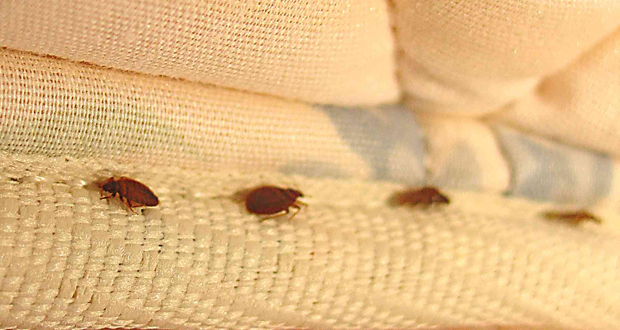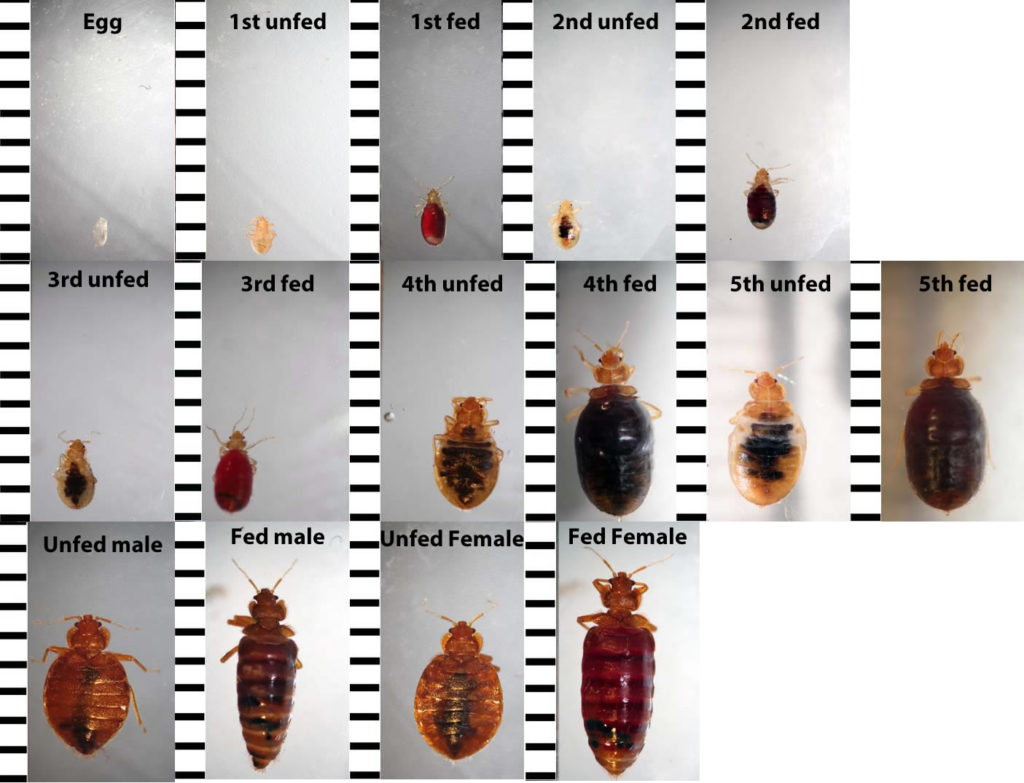Florida’s subtropical environment highlighted by warm weather, steady humidity, and only mild dips in winter lets bed bugs remain active, feeding and laying eggs throughout the year. In Pompano Beach, a bustling coastal city in South Florida, these elusive insects often invade homes, short-term rentals, or other commercial spaces via suitcases, secondhand furniture, or personal items. By the time occupants see itchy bites or small black specks on linens, bed bugs may already occupy mattress seams, furniture folds, or tight gaps behind baseboards. This page explains why bed bugs flourish in Florida, how to detect them, and why trusting a professional bed bug exterminator is your surest path to reclaiming a bite-free, restful interior.
Whether you own a single-family home in Pompano Beach or manage rental properties serving tourists and locals, finding bed bugs quickly and using specialized, multi-step treatments protects you from extensive infestations, night after night of bitten occupants, and do-it-yourself attempts that frequently ignore unhatched eggs or newly hatched nymphs tucked away in deeper cracks.
Why Bed Bugs Thrive in Florida
Mild Winter Temperatures
In colder regions, subfreezing winters naturally slow bed bug activity for months. Florida’s gentle cold season rarely hits freezing, granting bed bugs year-round access to warm indoor feeding. Climate-controlled interiors (about 65–85°F) ensure every stage egg, nymph, and adult remains active unless occupant or property manager vigilance stops them.
Frequent People & Goods Movement
Florida’s constant tourism, relocations, and secondhand furniture trade regularly introduce new luggage or household items, a common bed bug transport. In Pompano Beach, occupant turnovers or short-term rental guests may inadvertently bring bed bugs if occupant or housekeeping checks lapse. Just one overlooked egg-laden sofa can seed a widespread outbreak across multiple rooms.
Many Hiding Spots
Bed bugs flatten to fit inside mattress edges, box springs, couch seams, or baseboard cracks. They generally hide by day, emerging at night to feed on sleeping humans. Occupants often realize an infestation only after noticing mysterious bites or black flecks on sheets often once bed bugs have already infiltrated multiple corners.
Rapid Reproduction
A single female bed bug lays multiple eggs daily, each hatching in 2 weeks under Florida’s mild climate. Nymphs mature in roughly a month, producing new eggs if occupant or professional solutions fail. Overlooking small clusters soon escalates into multi-room infestations, raising occupant distress and re-treatment costs.

Telltale Signs of a Bed Bug Infestation
- Nighttime Bites or Red Welts
- Commonly on arms, legs, or neck areas exposed while sleeping small, itchy bumps frequently in clusters or lines.
- Some individuals develop raised welts; others exhibit minimal or delayed reactions, impeding early detection.
- Commonly on arms, legs, or neck areas exposed while sleeping small, itchy bumps frequently in clusters or lines.
- Black Specks or Blood Stains on Sheets
- Tiny black excrement dots peppering mattress seams, pillows, or sheets.
- Rusty smudges if bed bugs are crushed after feeding.
- Tiny black excrement dots peppering mattress seams, pillows, or sheets.
- Adult Bed Bugs
- Adults measure about 5–7 mm, resembling apple seeds in shape, flattening between meals, turning reddish-brown once engorged with blood.
- Nymphs are smaller, paler, typically in concealed folds or cracks.
- Adults measure about 5–7 mm, resembling apple seeds in shape, flattening between meals, turning reddish-brown once engorged with blood.
- Eggs & Shedded Skins
- Whitish, pinhead-sized eggs clinging to rough surfaces mattress edges, box springs, baseboards.
- Translucent exoskeletons from nymphs indicate active bed bug cycles.
- Whitish, pinhead-sized eggs clinging to rough surfaces mattress edges, box springs, baseboards.
- Possible Musty Odor
- Larger infestations sometimes emit a subtle, sweetish or musty smell from bed bug pheromones.
- Physical proof bite complaints, droppings, or actual sightings remains more definitive than odor.
- Larger infestations sometimes emit a subtle, sweetish or musty smell from bed bug pheromones.
- Occupant or Guest Complaints
- In multi-room or rental setups, occupant reports of repeated bites or small insects near bedding.
- Swift occupant or manager response prevents bed bugs from migrating occupant belongings or hallway traffic to other rooms.
- In multi-room or rental setups, occupant reports of repeated bites or small insects near bedding.
Why Ignoring Bed Bugs Is Problematic
Rapid Population Growth
Female bed bugs deposit multiple eggs daily; each hatches in 2 weeks in Florida’s mild winter. Nymphs mature within a month, laying additional eggs unless occupant or exterminator measures disrupt them. Neglecting minor sightings soon spawns multi-room infiltration, disturbing occupant rest.
Sleep Disturbance & Anxiety
Because bed bugs feed nocturnally, occupant sleep is disrupted. Repeated bites spark occupant fear or insomnia, constantly checking bedding for hidden feeders. Vacation rentals in Pompano Beach risk occupant dissatisfaction or poor feedback if bed bugs remain concealed.
Spread to Neighboring Spaces
In multi-unit properties hotels, apartments, short-term rentals bed bugs migrate occupant belongings, baseboards, or corridor traffic, saturating entire floors if occupant or housekeeping vigilance lags.
Greater Treatment Efforts & Costs
Small bed bug sightings managed early might only require partial insecticide or partial heat usage. Delaying until bed bugs embed behind walls or multiple floors demands occupant relocation for entire-room heat or repeated chemical sessions, increasing occupant inconvenience and final expenses.
Health & Reputational Effects
Though bed bugs rarely transmit illnesses, ongoing bites produce itching, potential infections from scratching, and occupant concern over unseen feeders. In lodging or property near Pompano Beach, occupant or guest encounters with bed bugs damage brand trust unless resolved thoroughly.

Why a Professional Bed Bug Exterminator Is Key
Comprehensive Inspections
A bed bug exterminator checks mattresses, furniture seams, baseboards, and behind décor for droppings, eggs, or live bugs. Some rely on canines for concealed pockets. Mapping every site ensures occupant synergy plus exterminator coverage from eggs to adult bed bugs.
Multi-Method Solutions
Professionals often integrate vacuuming, steam, insecticidal applications, or entire-room heat treatments to eradicate bed bugs in each phase. Single-step occupant attempts—like random aerosols typically remove visible adults only, sparing unhatched eggs or newly hatched nymphs out of immediate sight.
Heat Treatments
For significant or multi-room outbreaks, raising indoor temperatures above 120°F kills bed bugs (and eggs) in walls, electronics, or furniture. Occupants generally vacate for a few hours while exterminators confirm uniform heat distribution residue-free yet comprehensive.
Chemical Sprays & Dust
Residual insecticides or dust near mattress edges, furniture folds, or baseboard cracks kill bed bugs crossing post-feeding. If occupant sightings persist, subsequent spot treatments or insect growth regulators hamper newly hatched nymphs. Professionals carefully place chemicals, limiting occupant or pet exposure.
Follow-Up & Occupant Participation
Eggs hatch 2 weeks post-laying, so occupant or professional re-check visits confirm newly emerged nymphs also encounter lethal conditions. Occupants may encase mattresses, wash on hot cycles, or discard heavily infested items completing bed bug breeding cycle interruptions.
Typical Methods for Bed Bug Treatments
- Inspection & Extent of Infestation
- Exterminators scrutinize bedding, upholstery seams, baseboards, and décor edges for droppings, eggs, or adult sightings.
- Determining if bed bugs occupy one room or multiple floors guides partial vs. entire-structure coverage.
- Exterminators scrutinize bedding, upholstery seams, baseboards, and décor edges for droppings, eggs, or adult sightings.
- Vacuuming & Steaming
- Vacuuming surfaces grabs numerous adult bed bugs and eggs quickly.
- Steam (200°F) kills bed bugs on contact in deeper upholstery folds or mattress seams, chemical-free.
- Vacuuming surfaces grabs numerous adult bed bugs and eggs quickly.
- Chemical Insecticides
- Sprays or dust near bed frames, furniture folds, baseboards hamper bug travel after feeding.
- Insect growth regulators inhibit nymph maturity, halting repeated egg-laying cycles.
- Sprays or dust near bed frames, furniture folds, baseboards hamper bug travel after feeding.
- Heat Treatments
- Occupants typically vacate for hours while professionals elevate indoor temps to 120–135°F.
- Lethal heat seeps into wall voids, electronics, or furniture, eradicating bed bugs and eggs thoroughly, no chemical residue.
- Occupants typically vacate for hours while professionals elevate indoor temps to 120–135°F.
- Mattress & Box Spring Encasements
- Zippered covers lock any bed bugs left in bedding, starving them if they cannot access fresh blood meals.
- Occupants occasionally check encasements for holes or black specks indicating infiltration attempts.
- Zippered covers lock any bed bugs left in bedding, starving them if they cannot access fresh blood meals.
- Clutter Reduction & Hot Laundry
- Occupants wash bedding, curtains, clothes on hot cycles, fully drying them to destroy eggs or nymphs.
- Minimal clutter removes potential regrouping spots for bed bugs after occupant or pro treatments.
- Occupants wash bedding, curtains, clothes on hot cycles, fully drying them to destroy eggs or nymphs.
- Re-Check & Monitoring
- Eggs hatch in about 2 weeks. Occupant or professional re-check occupant or manager sightings to ensure newly emerged nymphs also face lethal solutions.
- Additional occupant synergy or repeated chemical/steam usage finalizes occupant comfort about bed bug eradication.
- Eggs hatch in about 2 weeks. Occupant or professional re-check occupant or manager sightings to ensure newly emerged nymphs also face lethal solutions.
- Inspection & Extent of Infestation

Service Area: Pompano Beach
Though bed bugs adapt widely in Florida’s mild winter climate, this page focuses on solutions for Pompano Beach, where occupant synergy plus specialized exterminator coverage remain essential to fully remove or block bed bug intrusions. Florida’s gentle cold season seldom slows bed bug feeding or reproductive cycles, so occupant readiness and professional treatment ensure complete protection or elimination.
Why Choose Us
Florida-Tailored Approach
We unite recognized bed bug solutions vacuuming, steam, insecticidal sprays, entire-room heat plus occupant housekeeping, fitting Florida’s environment. Occupant synergy, like high-heat laundering or discarding infested items, merges with thorough exterminator coverage to surpass occupant tries that often miss hidden eggs or newly hatched nymphs deeper behind furniture or in seams.
Careful Examinations
Before chemical or heat usage, technicians carefully examine bedding, furniture edges, or baseboards for excrement flecks, eggs, or adult sightings. Learning if bed bugs affect one bedroom or multiple floors guides occupant synergy plus total exterminator coverage for every stage.
Safe, Strategic Chemicals
We apply insecticides or dust exactly where bed bugs lurk mattress seams, furniture folds, behind baseboards rather than flooding occupant surfaces. For heavier or multi-room problems, entire-room heat kills bed bugs hidden in walls or electronics, free from chemical residue. Occupant synergy (reducing clutter, laundering) completes the solution.
Follow-Up & Occupant Education
Because bed bug eggs hatch 2 weeks after being laid, occupant or manager re-check visits confirm newly emerged nymphs also face lethal conditions. Occupants might enclose mattresses, hot-wash fabrics, or discard severely infested pieces, thoroughly ending bed bug breeding cycles.
Speedy, Local Support
Serving Pompano Beach, we recognize occupant patterns, short-term rentals, and Florida’s mild winter fueling bed bug expansions. Our proven methods and flexible scheduling minimize occupant disruptions, ensuring bed bugs vanish from each life stage entirely.
Next Steps
Seeing black specks on bedding, experiencing red bites on exposed skin, or spotting apple seed–sized bugs near furniture seams? Contact us to learn more or schedule your service. Our bed bug treatments in Pompano Beach unite careful property inspections, integrative extermination (steam, heat, insecticidal sprays), occupant housekeeping guidance, plus vital re-check visits killing bed bugs across each phase, preventing re-infestations.
Move quickly to protect occupants from ongoing bites, halt bed bugs from embedding behind walls, and prevent occupant frustration with occupant do-it-yourself attempts that ignore deeper eggs or newly hatched nymphs. Count on our Florida-based bed bug exterminator expertise to discover, eradicate, and deter these stealthy pests, guaranteeing occupant peace in Florida’s mild winter environment that would otherwise support continuous bed bug feeding and reproduction.
